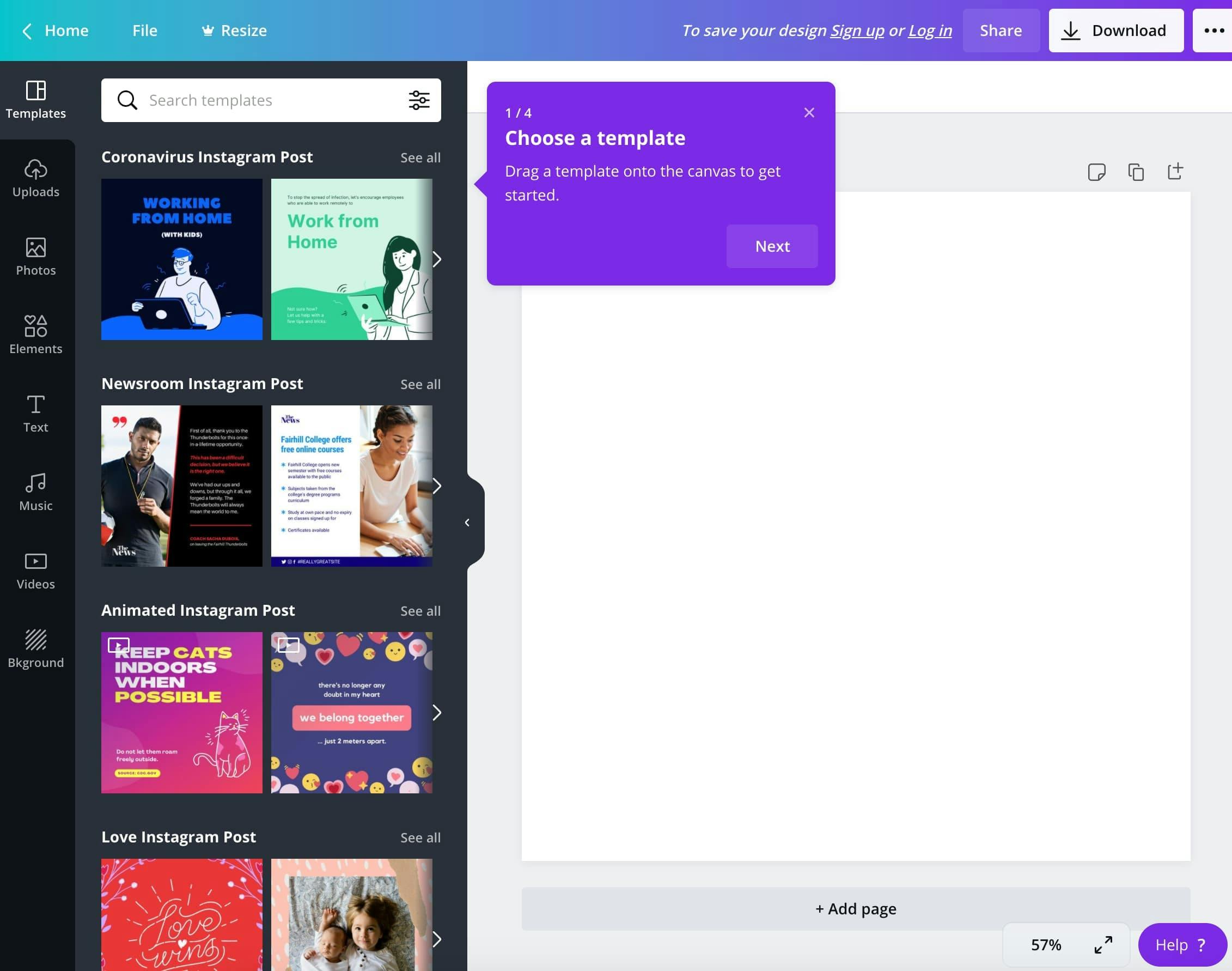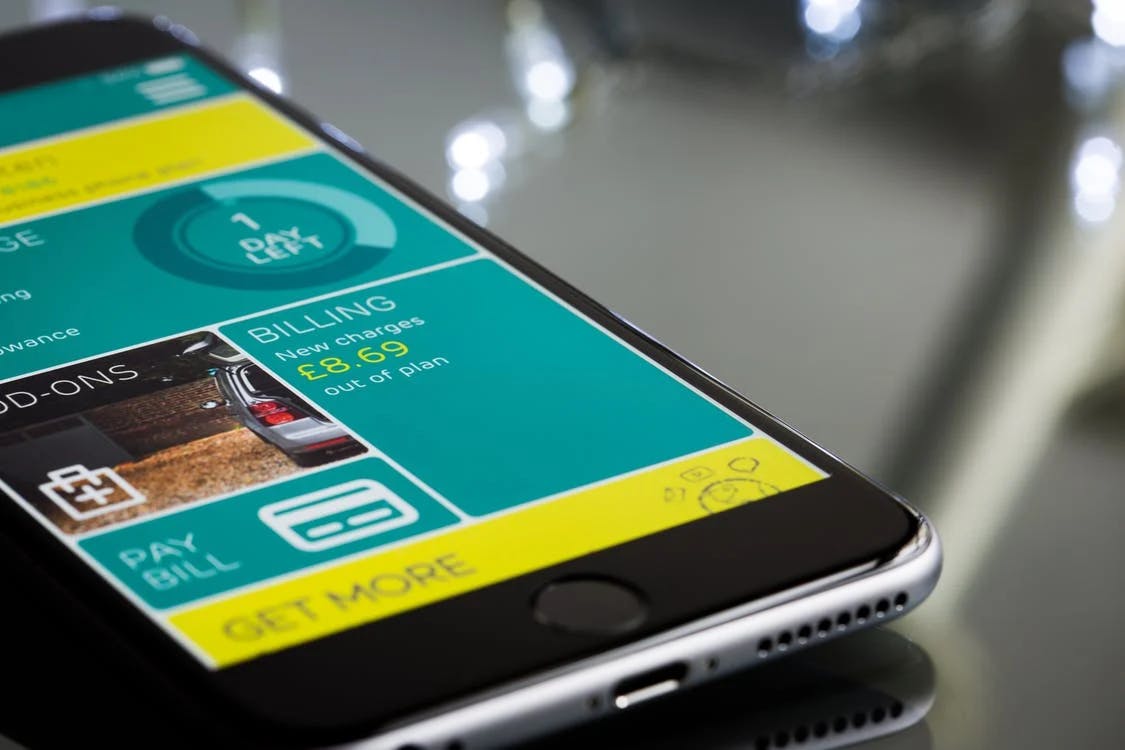However, months after your mobile app’s release, you notice a recurrent problem: customers aren’t engaging with your app. That’s when you’ll need an effective in-app marketing strategy.
In-app marketing refers to any message or marketing campaign that you send to active users while they’re inside your mobile app. The goal of in-app marketing is to guide the user throughout your app, improve engagement, and make sure they get the most out of your product. Different forms of in-app marketing include in-app messages, in-app notifications, and tooltips.
You can improve user engagement by collecting user feedback, personalizing onboarding, showcasing new features, and creating tooltip sequences. Here’s how:
1. Collect User Feedback
The first step to improving engagement is to find out where users aren’t engaging or drop off in the funnel. You can then use these insights to enhance certain features of your app and improve customer satisfaction.
One effective way to collect user feedback with in-app marketing is to send user surveys. The surveys include questions about the user’s experience and allow customers to provide their opinions on how to improve your mobile app.
For example, let’s say that one of your users decides to cancel their membership with your mobile app. To collect their feedback and reasons behind the churn, you can send them an in-app message with the following question: “What made you unsubscribe from your mobile app?” Below the question, you can include various multiple-choice answers, such as:
- The mobile app is missing features that I need
- The pricing is too high for me
- The mobile app is too glitchy
- I wasn’t able to achieve my goals with the app
2. Personalize Onboarding
Different users may not all have the same goals for using your mobile app. When you personalize onboarding to each user’s needs, you help create a more relevant mobile app experience for them. In fact, 87% of users are willing to spend more for a personalized experience with a company.
How you personalize onboarding will be different based on the type of mobile app that you manage. The key is to customize onboarding based on what the user says their goals are with your product during your initial feedback survey.
For example, let’s say that you manage a mobile fitness app that helps customers keep track of their calories. Your users could have different goals: some want to lose weight, while others might want to gain weight and build muscle. Based on the data you received in your initial feedback survey, you can create two different onboarding sequences for these two types of users.
3. Showcase New Features and Updates
If you just released a new feature or update to your mobile app, let users know. New feature announcements show users how you’re continually improving the app to better meet their needs. Also, if you don’t let them know about new vital features, customers might ignore these updates and not use them.
You can announce your new features with any in-app marketing tactic, whether it’s in-app messaging, tooltips, or notifications. Make sure to keep your product announcements short, within a couple of lines, and describe to the customer how the update will benefit their app experience.
In this in-app message, Venmo lets users know about its new feature that allows them to buy and sell crypto within the app. Users can then click on the in-app message’s CTA to learn more about the new update.

4. Create a Tooltip Sequence
Tooltips are text labels that pop up whenever a user hovers over or clicks on one of your features. Each tooltip includes information to educate the user on how the feature works.
With a tooltip sequence, you can guide users through the important steps of how to use your mobile app. The tooltip sequence helps users navigate your mobile app and understand how it works.
The goal of a tooltip sequence is to get users to reach their “aha moment,” which is the pinnacle moment when users realize the value of your app and how it solves their challenges or helps them meet their goals. The faster you get users to their “aha moment” with in-app marketing, the more likely they’ll adopt your mobile app.
First, you need to identify what your “aha moment” is by taking a look at your data and feedback from users: what patterns do you identify among your most loyal users? Examples of “aha moments” from top apps include:
- Expensify: When the user creates their first expense report
- Dropbox: When the user drops one file into their Dropbox folder
- Airbnb: When the user makes their first booking
Then, create a tooltip sequence to lead your app users into your “aha moment.” The tooltip sequence should include all the important steps that the user must take until they reach their “aha moment” to see the full value of your mobile app.
Graphic design app Canva’s “aha moment” is when the user realizes how easy it is to create a beautiful design with its app. Canva uses the following tooltip sequence to guide users toward their “aha moment”:

Canva’s tooltip sequence consists of four steps:
- Pick a template
- Edit
- Include your own photos or videos
- Publish
Thanks to this tooltip, Canva users quickly get the hang of the app and how it simplifies the graphic design process for them.
A User Engagement Strategy Isn’t Complete Without In-App Marketing
In-app marketing helps engage users by guiding them through the app experience and helping them understand the value of your mobile app. As a result, it increases your mobile app’s retention, which improves your revenue.
That said, integrating in-app marketing features from scratch is a complex process. Instead, it’s much better to go through a third-party API solution like Stream that helps build in-app marketing features, such as in-app messaging and activity feeds, that are reliable and scalable.
Our APIs are compatible with both Android and iOS mobile apps. Sign up for Stream’s free chat trial to learn more.

